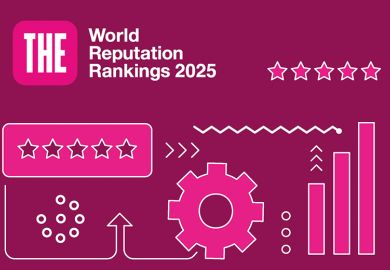As we move towards the release of the Impact Rankings 2023 on 1 June, it is important to outline the changes that we have made for this release and to revisit the reasons behind them.
One of the challenges of the Impact Rankings has always been that they are designed to encourage universities to do more in terms of sustainability. We actively want universities to improve year-on-year, and we have seen dramatic increases in participation by institutions keen to demonstrate their commitment to the United Nations’ Sustainable Development Goals (SDGs). When put together, this has made the ranking inherently dynamic in the years since its foundation in 2019.
Given the scope for universities to demonstrate rapid improvements in the Impact Rankings, our commitment to supporting change through stretching institutions, and the year-on-year increases in participation, we have always expected and welcomed significant change in the ranked order of universities and have, therefore, advised against direct year-on-year comparisons.
Key changes we made this year have raised the bar even higher for universities to demonstrate their commitment to delivering on the UN’s global goals. The Times Higher Education team looked through the data from previous years and identified the questions where more than 90 per cent of all universities answered positively about their actions.
We then looked for more challenging questions to replace the original ones. To reduce the amount of change in the ranking, we decided – after consultation with our advisory board – to limit this to SDG 3 (good health and well-being), SDG 4 (quality education), SDG 11 (sustainable cities and communities) and SDG 16 (peace, justice and strong institutions). We also made a change to a question in SDG 17 (partnership for the goals).
For example, in SDG 17 we have extended the question on education for sustainable development. Previously, this simply asked if universities were committed to ensuring education for sustainability across their students. Now we ask a tougher question: do they do this through optional courses, mandatory courses or by integrating sustainability across the curriculum? All this has, of course, reduced the stability of the ranking and has led to our final change in how we present institutional performance on the overall rankings.
This year, to increase the stability of the overall league table and to recognise its function as a broader assessment of a university’s institution-wide commitment to sustainability in general, we have decided to change the way institutions’ total scores are calculated. We will now use a rolling average of the last two years’ scores for the overall ranking table.
As with the previous years, we calculate an initial score as we always have done – using the score for SDG 17 and the scores for the three SDGs where a university scores most strongly.
To create the overall Impact Ranking score for 2023, we average this with the 2022 score.
For universities that are new to the rankings this year, we use the 2023 score by itself.
This will have the effect of recognising changes based on the work that universities are doing but will temper the rapid movements we have sometimes seen in the rankings.
We have not applied this two-year blending to any of the individual SDG rankings – just to the overall ranking.
This is important because the Impact Rankings are focused on supporting the diversity of university missions and contexts; alongside the overall ranking, they provide 17 separate rankings for each one of the separate UN SDGs. These individual rankings are really important – showing excellence and good practice in areas of specific focus for each institution, from helping to deliver food security, providing decent work, contributing to economic growth and supporting climate action. Capturing a broad range of activity across all 17 individual rankings, compiling case studies of excellence and allowing universities to demonstrate strength in their own strategic priority areas were always primary goals for the Impact Rankings.
When we launch the fifth annual edition of the Impact Rankings on 1 June, we will also launch a public dialogue and consultation on the best way to share the results and to present data in the future. Expansion of the Impact Rankings continues to be dramatic, as more and more universities worldwide, often backed by their governments, come forward to be assessed and to join the rankings, and as progress in delivering the goals becomes an increasingly pressing concern worldwide.
We are committed to ensuring that the rankings and the unique data they provide to governments, universities and, of course, students and their families are delivered in the most effective and powerful way possible, to support the sector’s vital mission to deliver real-world impact.
Duncan Ross is chief data officer at Times Higher Education.
Register to continue
Why register?
- Registration is free and only takes a moment
- Once registered, you can read 3 articles a month
- Sign up for our newsletter
Subscribe
Or subscribe for unlimited access to:
- Unlimited access to news, views, insights & reviews
- Digital editions
- Digital access to THE’s university and college rankings analysis
Already registered or a current subscriber? Login








